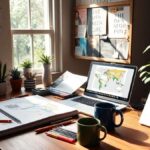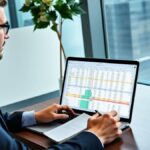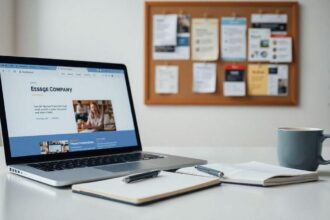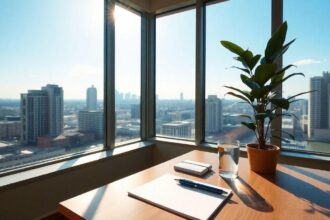Dress code recommendations for conservative job interview settings are crucial. First impressions matter a lot. When I walk into an interview, I want to feel confident and ready. The right professional attire can boost that feeling. In this article, I’ll discuss the key elements of what to wear, the colors and fabrics that work best, and how to avoid common mistakes. Together, we will explore how to dress for success and make your mark in any interview!
Understanding the Importance of Dress Code Recommendations for Conservative Job Interview Settings
Why First Impressions Matter
When I walk into a room, I want to make a strong first impression. It’s like stepping onto a stage; everyone’s eyes are on me. Research shows that people form opinions in just seven seconds. That’s not much time! So, I know that my appearance can speak volumes before I even say a word. A well-chosen outfit can show that I’m serious, professional, and ready to take on the job.
The Role of Professional Attire in Interviews
Dressing appropriately for a job interview is like putting on armor before a battle. It protects me and gives me the confidence I need. When I wear professional attire, I feel like I can conquer anything. Here are some reasons why professional attire is key:
- Shows Respect: Dressing well shows that I respect the interviewers and the opportunity.
- Reflects Company Culture: My outfit can mirror the company’s values and culture, helping me fit in.
- Enhances Credibility: Looking professional can make me appear more credible and trustworthy.
| Reason | Impact |
|---|---|
| Shows Respect | Builds rapport with interviewers |
| Reflects Company Culture | Indicates I understand the environment |
| Enhances Credibility | Increases trust in my abilities |
Key Elements of Professional Attire for Interviews
Essential Pieces for Your Interview Outfit
When I think about preparing for an interview, I know the right outfit can make a big difference. Here are the essential pieces I always consider:
- Dress Shirt or Blouse: A crisp, clean shirt is a must. I prefer something that fits well and feels comfortable.
- Blazer: This adds a layer of professionalism. I choose a well-fitted blazer that complements my outfit.
- Trousers or Skirt: I opt for tailored trousers or a knee-length skirt. They should be neat and polished.
- Shoes: Closed-toe shoes are my go-to. I make sure they are clean and in good condition.
- Accessories: I keep it simple. A watch or small earrings can add a nice touch without being distracting.
Choosing the Right Colors and Fabrics
The colors and fabrics I choose can set the tone for my interview. Here’s what I keep in mind:
- Colors: I usually stick to neutral colors like navy, black, or gray. These shades convey professionalism. Sometimes, I add a pop of color with a blouse or accessory.
- Fabrics: I prefer breathable fabrics like cotton or wool. They look good and feel comfortable, which helps me stay focused.
| Color | Meaning |
|---|---|
| Navy Blue | Trust and confidence |
| Black | Authority and elegance |
| Gray | Balance and neutrality |
| White | Simplicity and clarity |
Tips for Selecting Business Casual Interview Attire
Business casual can be tricky, but I have a few tips that help me navigate it smoothly:
- Fit is Key: I always make sure my clothes fit well. Baggy or tight clothes can distract from my skills.
- Layer Smartly: A blazer over a nice shirt can elevate my look without being too formal.
- Avoid Overly Casual Items: I steer clear of jeans, t-shirts, or sneakers. They don’t send the right message.
- Be Mindful of Length: If I wear a dress or skirt, I make sure it’s knee-length or longer. This keeps the look professional.
Common Mistakes to Avoid in Interview Dress Code
Overdressing vs. Underdressing
When I think about dressing for an interview, I often find myself caught in a tug-of-war between overdressing and underdressing. Overdressing can make me appear out of touch, while underdressing might signal a lack of respect for the opportunity. I’ve learned that it’s crucial to strike a balance.
For example, if I’m interviewing for a tech startup, wearing a suit might feel out of place. On the flip side, if I’m going for a position at a law firm, I can’t show up in jeans and a t-shirt. The key is to find that middle ground.
Here’s a quick table to help me visualize:
| Dress Code Type | Appropriate Attire | Example Jobs |
|---|---|---|
| Overdressing | Formal suits, ties | Law firms, finance |
| Underdressing | Casual wear, jeans | Creative agencies, startups |
| Balanced | Business casual, smart attire | Corporate offices, interviews |
Ignoring Company Culture in Attire Choices
One mistake I’ve made is ignoring the company culture when choosing my outfit. I remember a time when I wore a formal dress to a laid-back company. I could feel the eyes on me, and it was awkward. It’s essential to research the company’s vibe.
I often check their social media or website to see how employees dress. If I see casual outfits, I know I should tone it down a bit. If they’re wearing business attire, I’ll step it up.
How to Follow Interview Dress Code Guidelines Successfully
To navigate the dress code recommendations for conservative job interview settings successfully, I follow a few simple steps:
- Research the Company: I look up their website and social media to understand their style.
- Ask for Guidance: If I know someone at the company, I’ll ask them what to wear.
- Dress One Step Up: I aim to dress slightly more formal than the daily attire.
- Keep it Simple: I avoid flashy colors or patterns, sticking with neutral tones.
By following these steps, I feel more confident and prepared for the interview.






